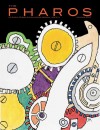
|
The Lead FilesThe Pharos, Fall 2007
Some years ago, at a teaching conference in Long Beach, California, Dr. Mellinkoff discussed the case of a middle-aged Cambodian man who presented to the emergency room with severe episodic abdominal pain. Anyone could tell he was in agony from his facial expression and constant shifting motion. However, his physical examination showed no evidence of peritoneal irritation or bowel obstruction, nor did his radiographs or blood tests suggest any gastric, duodenal, pancreatic, or biliary disorder. Even a porphyria test proved negative. Then, just as mysteriously as it had begun, the man’s pain resolved, and he left the hospital, only to return weeks later in the same distressed state. This time, however, some of his red cells contained subtle blue inclusions. A bell rang, and a blood specimen was sent for a lead level. When it returned unequivocally high, discussions through a translator finally solved the mystery. Before arriving in the United States, while he was still living in a refugee camp, the patient had been charged with procuring alcohol for use in religious ceremonies. Being an enterprising fellow, he built a still from a car radiator and produced what was needed. Periodically, he also drank the spirits. Cracking a case of recurrent colic—and then deducing that a soft, blue-white metal leaching from radiator solder into homemade brew was its cause—was no doubt exhilarating to the physicians who first spied basophilic stippling in this religious celebrant’s blood. What doctor would not delight in such a Sherlock Holmesian coup? There’s another moral to the tale, however. The exotic denouement of a clinical-pathologic conference sometimes stands in stark contrast to everyday reality outside hospital lecture halls. Nothing could be truer when considering the ubiquity of lead poisoning from ancient to modern times. |

